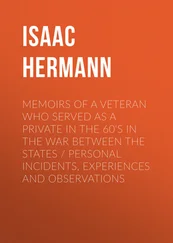¬
In London, she rarely talked about her fieldwork. “Hornet, make me a huge martini right this second!” she would demand as she breezed into the kitchen of Chariots of Fire director Hugh Hudson, whom she had nicknamed after the vintage car. If she talked about her travels, she would lighten them with a flawless imitation of a despot guaranteed to get a laugh. “I don’t want to be the kind of person about whom they say as you move up to the bar, ‘Oh, god, here comes the experiences in Beirut again,’” she once wrote. Former Sunday Times editor Andrew Neil recalled the day in 1994 he got swept up in his star reporter’s carousel: “Suddenly I found myself in a taxi being uprooted from my hotel to a secret and god-awful place in downtown New York where I was to meet the most astonishing Saudi defector. How would she do it? I have no idea. There I was, powerless under Marie’s spell.”
There were no boundaries in her friendships; guerrilla fighters, refugees, movie stars, and writers would appear at her parties. “She stayed in many ways a wayward teenager,” one friend said. She was careless when it came to bills, taxes, and expense-account receipts, and she failed to deliver books she promised publishers. In Iraq in 2003, Colvin accidentally left her SAT phone on, and the paper had to cover a $37,000 bill. She laughed loudest at herself—chain-smoking, starting to serve supper at midnight, drunk, and realizing she had forgotten to turn on the stove.
“THE SILVER GIRL SAILS OFF INTO THE NIGHT,” the Sunday Times headlined the inside spread of its special section, where Colvin was pictured in a tiny bikini on Richard Flaye’s sailboat. A fierce dieter, she would have been delighted to see her sveltest self taking up almost half a page. Several memorials referred lightly to Colvin’s long nights of drinking. The reality was darker. Often she would disappear for days. “I’m in the hole,” she once confided to producer Maryam d’Abo, and she would say the same to friends when they drove to her house, worried that she had slipped back into the terrors of post-traumatic stress disorder (PTSD). An extreme reaction to psychological trauma, PTSD has become a regular news feature, afflicting returning soldiers from Iraq and Afghanistan. The complications—paranoia, alcohol and drug abuse, night terrors—are often slow to appear.
At the Frontline Club, I detected a strong undercurrent in the room. “The Sunday Times has blood on its hands,” I overheard one writer say. In the days following Colvin’s death, there were many unanswered questions: Why didn’t she wait to file her copy until she had safely crossed the Lebanese border? What drove her back, knowing that her SAT phone had been compromised and journalists had been targeted? What was a fifty-six-year-old woman with a drinking problem and PTSD doing in the center of a massacre?
A RISING STAR
“Are we really going to do this?” Colvin asked the photographer Tom Stoddart as they stood outside the refugee camp of Bourj el Baranjneh, in West Beirut, in 1987. Beirut was divided by a “Green Line” battle zone—Christians on the east, Muslims on the west. Colvin and Stoddart were recent hires at the Sunday Times , covering the conflict between Lebanon and Yasser Arafat’s Palestinian Liberation Organization. In the camps, the Palestinians were being starved and were under siege by Amal, the Syrian-backed Shiite militia. Almost seventy women had been gunned down, and sixteen had died.
“Every reporter in Beirut was trying to get into the camp,” Stoddart said. “But Marie, with her American charm, had convinced a commander not to shoot us. We had a plan.” They would run two hundred yards across a road manned by Amal commanders with rockets. “The idea was that we would hold hands. In case one of us was shot, we could rescue each other.” Colvin hesitated, then took Stoddart’s hand. “This is what we do,” she said calmly, then ran.
The next morning, snipers turned their guns on Haji Achmed Ali, a twenty-two-year-old Palestinian woman, who lay near a pile of rocks by a burned-out car. Blood poured from the wounds in her head and stomach. Colvin took in and described the young woman’s tiny gold earrings and “the handful of blood-soaked dirt she had clenched in her pain.”
Stoddart captured Colvin by the makeshift operating table, her face glazed with incomprehension. Colvin and Stoddart then had to smuggle the film out of Bourj el Baranjneh. Colvin put the canisters in her underwear, along with a letter Dr. Pauline Cutting, a British surgeon trapped in the camp, had written to Queen Elizabeth, urgently appealing for her help. They fled Beirut on an all-night ferry to Cyprus. Colvin filed her story on a telex. The headline would read “Snipers Stalk Women on the Path of Death.” Inside were two full pages of photographs of the young Palestinian woman leaking blood. It was the Ur-moment of Colvin’s early London career. But the image of Haji Achmed Ali and her earrings would haunt Colvin’s nightmares.
By the time she arrived in London, Colvin had already worked as the Paris bureau chief of UPI. Not long out of Yale, she had so impressed her UPI bosses in Washington that when she threatened to quit if they didn’t send her to Paris they did. “I was the bureau chief and everything else, including the desk assistant,” Colvin later said of that assignment. But her vision of the future had been shaped by Vietnam and Watergate and fueled by reading the New York Times war correspondent Gloria Emerson and the political philosopher Hannah Arendt. Soon, bored by the jeunesse dorée of Paris, she realized she was missing a bigger story—a possible war in Libya. In Tripoli, Muammar Qaddafi, an epic thug in a desert filled with oil, was poised in his underground lair, planning terror strikes. “Just go,” the then New York Times reporter Judith Miller told Colvin, giving her a list of contacts. “Qaddafi is crazy, and he will like you.”
When the sleek young reporter appeared at Qaddafi’s estate—avoiding any press-corps briefing—the startled guard believed she was French. At forty-five, Qaddafi lived in a palace at the Bab al Azizzia compound, and he had an endless appetite for beautiful women. That night, she was summoned to his chambers.
“It was midnight when Col. Moammar Gadhafi, the man the world loves to hate, walked into the small underground room in a red silk shirt, baggy white silk pants and a gold cape tied at his neck,” Colvin began her story, a scoop that went around the world. She had an exquisite eye for detail—Qaddafi’s “stack-heeled gray lizard skin slip-ons,” TVs replaying his speeches continuously. “I am Qaddafi,” he said. She remembered saying to herself, “No kidding,” and then spent the next hours fending off his advances.
The UPI bannered the story, and Qaddafi’s ardor for her grew stronger. In a later interview, he pressed her to wear “petite green shoes”—his favorite color—and on one occasion he sent a Bulgarian nurse to draw her blood. Colvin refused and soon fled the country.
¬
Colvin’s mother was visiting her in Paris in 1986 when the invitation came from the Sunday Times . “I’m not going to work there!” Marie said. “All my life I wanted to live in Paris, and I’m finally here.” Besides, the Sunday Times of London had been in turmoil since the Rupert Murdoch takeover. Former editor Harold Evans, whose investigative reporters had revolutionized British journalism, was gone, as was the former owner, Roy Thomson, who had backed the vigorous disclosure of corruption. The new, young editor, Andrew Neil, persuaded Colvin to take the job.
“Who could ever forget the first time they saw Marie? She was a whirl of black curls,” said John Witherow. “The impression she gave was quiet authority and immense charm.” Colvin, who had just turned thirty, was absorbed into Neil’s new team, which included a platoon of dynamic women reporters and one of the finest foreign staffs in the world, known for the vivid, personal style he exacted from them.
Читать дальше












